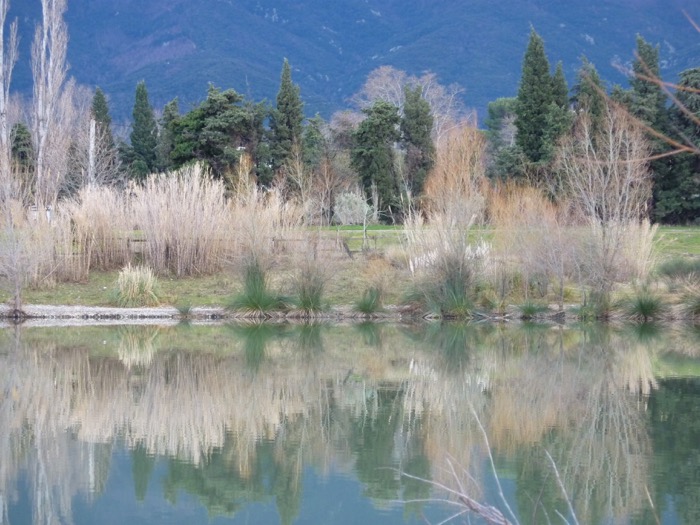with Gill Storey
January is the coldest month of the year but it presents a real challenge: very little is growing, the branches are bare, the spring bulbs are just peeping up and one can see the bare bones of the garden.

So it is the time to review and plan and to tidy up. Look at the gaps where you could improve the planting – a shrub, a plant to add “architectural” interest – height or shape to complement existing planting.
Think where the garden looked a bit empty or boring last year, and plan a few bulbs or corms to go in the vacant spots.
It always helps that the shops, whether your local corner shop, the supermarket or the garden centres, always display the seeds etc of the plants which are appropriate to plant at the time so that you can stock up with reasonable confidence but ask a local gardener if you are unsure.
Check any bulbs or corms in store for dryness or rot in readiness for re-planting. This is the time to plant roses and bare-root fruit trees or shrubs.
Plan your vegetables if you wish to grow some: here is a simple plan dividing your plot into four beds:
♣ Bed 1
Potatoes – this cleans the ground and means that a lot of manure is added Plant the potatoes in succession during the spring – earlies and then main crops.
♣ Bed 2
Early maturing plants: early peas, broad beans, carrots, lettuces, radishes, spinach, autumn-sown cauliflowers, shallots, early turnips. This area is also used for the winter greens – broccoli, cabbages, Brussels sprouts, cauliflowers, to take over the space of the spring veg. Lime before planting the winter greens.
♣ Bed 3
Late summer and autumn crops, spring sown cabbages, cauliflowers, more peas, beetroot, more carrots and turnips. When the bed is cleared in September plant green manure to be dug in in spring.
♣ Bed 4
Late crops: onions, root crops, celery, leeks, runner beans and anything else which will stay there till late autumn. When dug up, the ground should be trenched and manured or the remains of the compost heap added.
Draw a plan and remember that the beds should be rotated on each year e.g. 1 becomes 4 etc. 2 becomes 1, 3 becomes 2 and 4 becomes 3. If you don’t want to don’t grow potatoes, but there is nothing more delicious than new potatoes.
Tidy the garden: You may not wish to clear the dead leaves from your garden yet. They are rotting nicely and giving shelter to good creatures as well as to pests. Hedgehogs need to nest, and many insects eat other insects. But you should prune your roses, the lawn edges, if any, should be tidied, and you should make sure that stakes, ties, fleeces etc are all in position to protect your plants for the cold weather still to come. IF you get a dry spell you can stain or paint any wood structures, make compost stores with four posts and wire netting, or use 4 planks nailed together to make raised beds. A cold frame is good for sensitive pot plants. Use a winter wash such as lime wash or a proprietary brand on trees and shrubs after scrubbing the stems with a bleach solution and use the bleach solution also to clean grasshouse interiors.
FINALLY, FEED THE BIRDS.
They are useful for eating insects while adding so much interest and variety to a garden.

